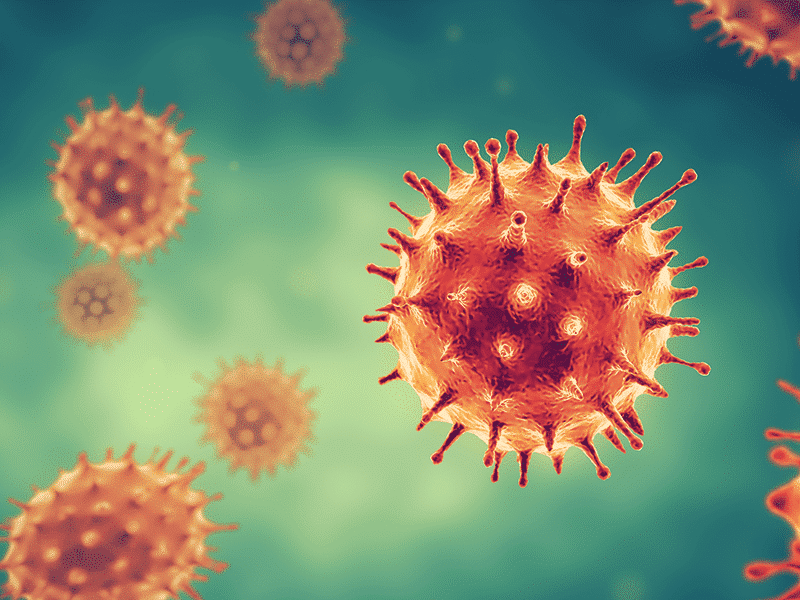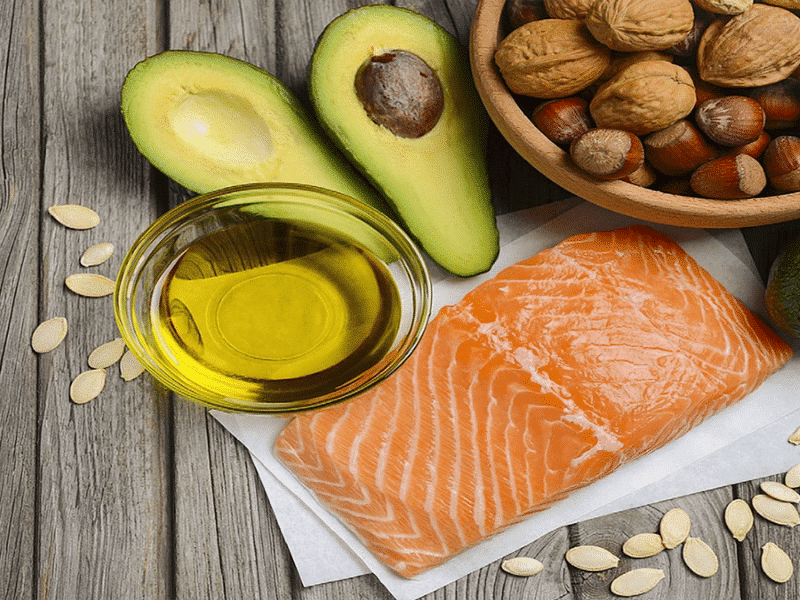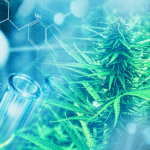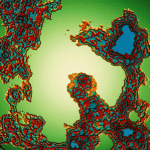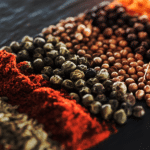I’m stressed. There I said it. Almost three months into this global pandemic and my nerves are getting rather frayed at the edges.
In general terms I’ve been lucky – I’ve not been ill, nor has anyone in my immediate circle. And, unlike many others, at this point I’m not struggling to pay my rent. But lockdown is definitely taking its toll on my inner world as well as my outer. I’m pretty sure I’m not alone in feeling this way and it is no doubt why only last month the World Health Organization announced the gloomy prospect of an impending, pandemic-related mental health crisis.1
Psychological stress from any source is known to increase the chances of depression and anxiety.2 It’s possible, though, that the stress stemming from coronavirus lockdown may come with its own mental health challenges. Indeed, in a strange parallel to our current corona-normal, one method researchers employ to recreate chronic stress in the lab is to subject animals to repeated restraint.
Unsurprisingly, the stress caused by restraining rodents (and most probably humans) eventually sends them into a state of depression.3 It also causes a significant drop in anandamide – the ‘bliss endocannabinoid’ – in the corticolimbic brain regions.4
This shouldn’t be a surprise as chronic stress is known to impair the endocannabinoid system (ECS), making us more vulnerable to illness, both mental and physical.
Could my recent emotional dip (and no doubt one shared by millions of people around the world) be partly explained by an endocannabinoid system slowly depleted after three months of confinement? And if the answer is yes, should we all be taking proactive steps to support optimal endocannabinoid function?
To see whether my theory has any validity, I decided to speak to someone with a deeper understanding of our ECS – and who better than neuroscientist and friend of Project CBD, Greg Gerdemen, PhD.
The Endocannabinoid System and Stress
“The physiological stress response throughout the brain and endocrine system seems to be modulated by the endocannabinoids,” explains Dr. Gerdeman. “When you have a high amount of stress and you get that fight or flight response. Endocannabinoids going up in certain key brain areas, like the thalamus and the hypothalamus, are part of what turns that stress response off.”
In basic terms, when functioning optimally the endocannabinoids anandamide and 2-AG activate cannabinoid receptor signaling throughout the body, which helps us adapt to stress and keeps us physiologically within the parameters of healthy homeostasis.
“Animals learn to get past traumatic fear using endocannabinoid signaling,” says Gerdeman. “The very perception of threat is in some way sort of gated by endocannabinoids like a safety switch on a fire alarm. Animals with a higher anandamide level in the amygdala, an area of the brain’s fear center, are less reactive to threat. And if you put a human being in an MRI brain scanner and give them a low dose of THC, those brain areas will be less hyper-reactive to fear of threatening stimuli. The neuroendocrine, physiological circuit of stress is regulated at every point by this endocannabinoid system.”
It’s possible then in our current, much-reduced COVID-19 worlds, rather like the physically restrained rodent, depleted endocannabinoid levels could make us more reactive to the threats, perceived or otherwise, around us.
Lower than normal endocannabinoid levels are also commonly found in the collection of diseases such as fibromyalgia, irritable bowel syndrome, and migraines coming under the umbrella of Clinical Endocannabinoid Deficiency.5 Unfortunately, measuring levels of endocannabinoids is no easy task as these compounds are generally produced on demand and are broken down rather quickly once their work is done.
An ‘Aha’ Moment
Assuming we’re all probably a little endocannabinoid-challenged at the moment, there are various ways of moving from deficient to balanced.
In their paper, “Care and Feeding of the Endocannabinoid System: A Systematic Review of Potential Clinical Interventions that Upregulate the Endocannabinoid System,” John M. McPartland, Geffrey W. Guy, and Vincenzo Di Marzo discuss several healing modalities – such as diet, exercise, osteopathy, and acupuncture – that can improve ECS function by increasing the production of endocannabinoids; decreasing endocannabinoid breakdown; or augmenting (or decreasing) receptor density or signaling.6
Readers of Project CBD are likely familiar with the cannabis plant’s unique ability to interact with and support the endocannabinoid system. Indeed, without the cannabis plant, the ECS might not have been discovered in the first place.
As Dr. Gerdeman explains: “The pursuit to understand how cannabis works led to the discovery of the receptors that THC and other cannabinoids interact with, especially THC. And that led to that first ‘aha’ moment because these receptors are all over the brain. I mean, our brains are exquisitely wired to be responsive to cannabinoids.
“There is a huge body of research that supports the endocannabinoid system working in this multifaceted way to support homeostasis and wellness. And the cannabis plant is nature’s queen of supporting the endocannabinoid system.”
Get In Touch With Your Inner Hunter Gatherer
While consuming cannabis is certainly a direct, efficacious route to giving our ECS a boost, it’s not the only way. If we dig a little deeper into the role the ECS has played in our evolution as a species, we find a few clues on how else we can maintain endocannabinoid health.
Back then our survival depended on procreation, hunting, feeding, and social contact, and it just so happens all these activities – reaching orgasm,7 running long distances to catch our prey, eating, and engaging in social play, give us a blissful endocannabinoid hit as a reward, making us more likely to do them all again.
Dr. Gerdeman himself was involved in a study8 that showed anandamide levels significantly rise during high intensity endurance running, with the researchers concluding this played a key role in our evolution as a species that’s “wired to run.” For ancient humans, being able to run after game and away from predators was vital for survival. In essence, we survived long ago by becoming endurance athletes.
Gerdeman explains: “Our hominid ancestors were much more tree adapted like other primates that are arboreal. And during a time period [when] widespread forests were starting to shrink and become more of the savanna habitat in eastern Africa, there was an adaptive need for foraging greater distances [for] hunting that was probably endurance based – hunting where you can run animals to exhaustion, so there were certain incentives to run.
“There’s also good evidence that anandamide enhances the palatability of food. So I think about it in terms of like a hunter forager. It’s not just that running for 30 minutes makes you feel good, but you run and get to the foraging space and you start harvesting those yummy berries or you successfully capture prey and you get food. And there’s also a perfectly good reason scientifically to think that the anandamide levels that help to mitigate the aches and pains also motivate the running behavior. It also makes the food reward when you get there, just that much more pleasurable and that much more rewarding.”
So, for Dr. Gerdeman, to maintain endocannabinoid health in the context of the coronavirus, “It’s really important to get up and moving. Finding exercise routines, even if you’re in an apartment, is an important way of feeding the endocannabinoid system and promoting balance.”
His advice is backed up by a 2019 study in which women with major depressive disorder exercising on a bike for twenty minutes at a prescribed moderate speed showed both significant increases in anandamide and improvements in mood.9
Follow Your Bliss
Exploring whether activities other than pounding a treadmill increase endocannabinoids and in turn boost our mood was the subject of a UK study10 commissioned by the BBC television series, ‘Trust Me I’m a Doctor.’ Healthy female volunteers recruited from a local choir took part in four different types of activities on separate days: singing, dancing, cycling on an exercise bike, and the control activity, reading dishwasher and boiler manuals.
Perhaps unsurprisingly, the choir members found their mood significantly improved after the singing activity, which was incidentally led by their choir director. Not only did singing make them feel happier, but it also increased anandamide by 42%. Dancing didn’t fare too badly either, showing an overall upward trend in endocannabinoid levels.
The results of the study would suggest that as well as increasing overall enjoyment, a subject’s preference for an activity may play a role in how much endocannabinoid reward is experienced. My own personal pleasure is dancing, particularly the ecstatic variety. I suspect the joy I feel after a few hours of rhythmically moving my body without any stimulants apart from some damn good music, has a lot to do with a serious spike of anandamide. Or maybe my sheer delight in dancing makes me produce more endocannabinoids in the first place?
“I think it can become kind of circular,” says Dr Gerdeman, himself a seasoned djembe drummer, “is your anandamide promoting your joy or vice versa?”
“You know, there’s a certain way of being naturally high when I get into a zone,” he shares, “and I really just feel something musically. Of course, there’s high activity when you’re hitting a drum as well. But will that elevate endocannabinoid levels? I have no doubt that it would.”
Perhaps the takeaway from all this is despite or even because of the restrictions placed during the coronavirus pandemic, we’d all do well to find ways of expressing our own joy. So jump on that trampoline, join an online Zumba class, bust out your ukulele. Just do whatever it takes to make your soul sing, and your endocannabinoid system will thank you.
To listen to the full interview with Greg Gerdeman, go here.
Mary Biles, a UK-based journalist, educator, and Project CBD contributing writer, is the author of The CBD Book (Harper Collins, UK). © Copyright, Project CBD. May not be reprinted without permission.
Footnotes
- The Telegraph. Health experts warn of Covid-19 mental health crisis. 14 May 2020
- Longfei Yang et al. The Effects of Psychological Stress on Depression. Current Neuropharmacology. 2015 Jul; 13(4): 494–504.
- Xixia Chu et al. 24-hour-restraint stress induces long-term depressive-like phenotypes in mice. Sci Rep 6, 32935 (2016).
- Matthew N. Hill et al. Endogenous cannabinoid signaling is essential for stress adaptation. PNAS May 18, 2010 107 (20) 9406-9411.
- Ethan B Russo. Clinical Endocannabinoid Deficiency Reconsidered: Current Research Supports the Theory in Migraine, Fibromyalgia, Irritable Bowel, and Other Treatment-Resistant Syndromes. Cannabis Cannabinoid Res. 2016; 1(1): 154–165.
- John M McPartland et al. Care and Feeding of the Endocannabinoid System: A Systematic Review of Potential Clinical Interventions that Upregulate the Endocannabinoid System. Plos One. March 2014.
- Johannes Fuss et al. Masturbation to Orgasm Stimulates the Release of the Endocannabinoid 2-Arachidonoylglycerol in Humans. The Journal of Sexual Medicine. November 2017. Pages 1372–1379
- Gregory L. Gerdeman et al. Wired to run: exercise-induced endocannabinoid signaling in humans and cursorial mammals with implications for the ‘runner’s high’. Journal of Experimental Biology 2012 215: 1331-1336.
- Jacob D Meyer et al. Serum Endocannabinoid and Mood Changes After Exercise in Major Depressive Disorder. Med Sci Sports Exerc. 2019 Sep;51(9):1909-1917.
- Saoirse E. O’Sullivan et al. An Analysis of Endocannabinoid Concentrations and Mood Following Singing and Exercise in Healthy Volunteers. Front. Behav. Neurosci., 26 November 2018
Recommended Readings
Cannabis, CBD & COVID-19
What science says about CBD as an anti-viral agent. And, how prohibition is making a bad situation worse.
Should You Use Cannabis to Prevent Illness?
Preventive medicine is a hot topic these days as everyone is looking for ways to stay healthy and avoid illness.
Diet & the Endocannabinoid System
New research on how the ECS impacts hunger, diet, digestion, and energy metabolism.





